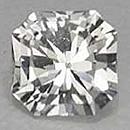|
|
||||||||||||||||
|
||||||||||||||||
|
||||||
|
|
|
|
Bromellite
|
|
| | |
| Discovered in 1925; IMA status: Valid (pre-IMA; Grandfathered) | ||
|
| ||
|
Chemistry |
|
|
| |
|
BeO | |
|
|
Beryllium Oxide |
|
Molecular Weight: |
25.01 gm |
|
Composition: |
Beryllium |
36.03 % |
Be |
100.00 % |
BeO |
|
|
Oxygen |
63.97 % |
O |
|
|
|
|
|
100.00 % |
|
100.00 % |
= TOTAL OXIDE |
|
|
|
||||
|
Classification |
|
|
| |
|
Oxides | |
|
4/A.03-10 | |
|
|
4 : OXIDES (Hydroxides, V[5,6] vanadates, arsenites, antimonites,
bismuthites, sulfites, selenites, tellurites, iodates) |
|
Related to: |
Simple Oxides |
|
Varieties: |
None |
|
Synonyms: |
None |
|
|
|
|
Crystal Data |
|
|
|
|
|
As prismatic crystals, elongated along [0001], to 1 mm, showing pyramidal hemimorphism, with {0001} and {1010} well developed, {1011} small; may be tabular || {0001}; in randomly intergrown rosettelike aggregates; cleavage fragments, to 10 cm. |
|
|
None |
|
|
|
|
|
Physical Properties |
|
|
|
|
|
Distinct on {1010} |
|
|
None |
|
|
Brittle |
|
|
9.0 |
|
|
3.01 - 3.03 (g/cm3) |
|
|
Fluorescent; fluoresces yellowish white in both LW and SW UV; may also display weak orange under SW UV. |
|
|
Not Radioactive |
|
|
Other: | |
|
|
|
|
Optical Properties |
|
|
|
|
|
White to creamy White, Colorless |
|
|
Transparent to Translucent |
|
|
Vitreous |
|
|
1.719 - 1.733 Uniaxial ( + ) |
|
|
0.0140 |
|
|
Strong to moderate; r > v or r < v |
|
|
None |
|
|
|
|
|
Occurances |
|
|
|
|
|
Geological Setting: |
In hydrothermal calcite veins and veinlets in hematite skarn and skarnized limestones (Långban, Sweden); in vugs in natrolite, hydrothermally altered from nepheline, in syenite pegmatite (Langesundsfjord, Norway). |
|
Common Associations: |
Swedenborgite, Richterite, Manganophyllite (Långban, Sweden); Natrolite, Diaspore, Chamosite (Langesundsfjord, Norway). |
|
Common Impurities: |
Al, B, Ba, Ca, Fe, Mg, Si |
|
Type Locality: |
Långban, Filipstad, Värmland, Sweden |
|
Year Discovered: |
1925 |
|
View mineral photos: | |
|
|
|
|
More Information |
|
|
|
|
|
| |
|
|
|
|
Bromellite is an interesting mineral in that it is a simple oxide, similar to Periclase (MgO), Tenorite (CuO) and Zincite (ZnMnO), and consists only of beryllium and oxygen (BeO). It has a Mohs hardness of 9 but a molecular weight of only 25.01 gm. Synthetic Bromellite crystals were made by the flux method in the 1960's by Rockwell International of California. Their proposed use was as heat sinks for semiconductors in electronics. Synthetic Bromellite has a thermal conductivity higher than Gold and close to that of Copper and could be confused with Diamond when using a thermal tester. Bromellite was first described in 1925 by Swedish scientist and artist Gregori Aminoff (1883-1947) from skarn-like deposits in Långban, Filipstad, Värmland, Sweden. Bromellite was named to honor Swedish physician and paleontologist Magnus Bromelius, ennobled as von Bromell, (1679-1731). According to Swedish botanist and mycologist Elias Magnus Fries (1794-1878), von Bromell was the first Swede to describe plant fossils. Particularly noteworthy among von Bromell's scientific work is the "Lithographiae Suecanæ Specimen Secundum" in 1727, considered one of the first scientific works devoted exclusively to Swedish fossil and mineral finds. Also, in a geological treatise, von Bromell proposed a classification of minerals according to their chemical composition. Bromellite
distribution: the only location known for a (only one)
gem quality natrual crystal is near Gilmala, Ratnapura, Sri Lanka.
Non
gem quality crystals are found at these localtions: Långban,
Värmland, Sweden. In the Saga larvikite quarry, Tvedalen,
near Larvik, Norway. From the Izumrudnye district, Yekaterinburg
(Sverdlovsk), Ural Mountains, the Pitkäranta district,
Lake Ladoga, Karelia, and other less-well-defined localities
in Russia. |
|
|
We
do not have any Bromellite gems
in inventory at this time. Please
check back soon. |
